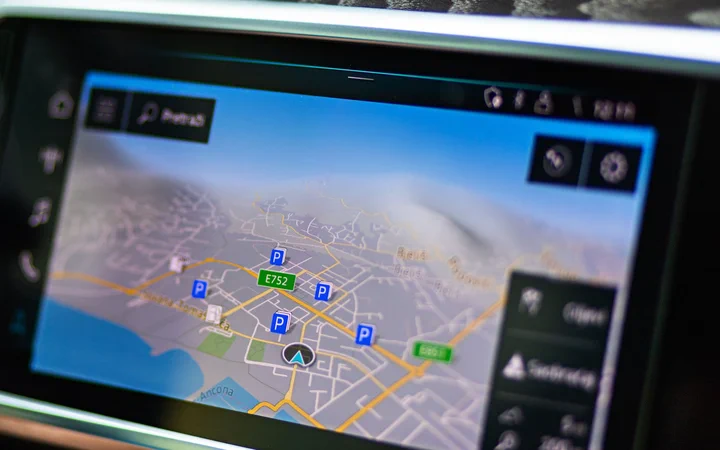What if Everything We Believe About Ux Is Wrong?
Breaking free from the cult of user-centered design

A few years back, I watched two parts of the same company solve the same problem in radically different ways—and the contrast revealed everything wrong with how we think about UX today. I was embedded with a multi-billion dollar distributor, studying how their B2B and B2C divisions served customers. When an entrepreneur needed an unusual quantity of seasonal product that would make or break his quarter, the B2B sales rep sent him to a retail location to complete the order.
What happened next was a masterclass in the difference between user experience and customer creation.
The retail location was a marvel of modern UX thinking, with a carefully orchestrated customer journey from entrance to checkout. Staff trained in customer delight. Every touchpoint had been researched, prototyped, and optimized based on thousands of hours of customer feedback.
But when this entrepreneur walked in with his make-or-break order, the beautiful system stuttered. The store manager saw disrupted inventory projections. The staff saw a workflow exception that would derail their carefully choreographed day. The optimized experience had no path for this edge case. They’d fulfill the order, grudgingly, but every perfectly designed system treated this customer as an anomaly to be managed rather than an opportunity to be seized.
Meanwhile, the B2B salesman saw something entirely different. He saw a business owner whose success or failure hung in the balance. So he didn’t just send an email and move on. He drove forty minutes across town. He rolled up his sleeves and helped load two trucks in the parking lot. He followed those trucks to the customer’s location and spent an hour stocking shelves. No app. No journey map. No service blueprint.
Here’s what should keep every product leader up at night → The retail team had millions invested in CX. They had design systems, research protocols, and NPS scores that would make any UX team proud. The salesman had none of that—just a clear understanding that his job was to create a customer, not optimize a touchpoint.
Guess which approach built a customer for life?
Guess which one actually created enterprise value?
This is the uncomfortable truth the design community doesn’t want to hear:
We’ve become so obsessed with perfecting the experience that we’ve forgotten experiences don’t pay bills—customers do.
The Great Divergence
This isn’t an isolated incident. It’s symptomatic of a fundamental misunderstanding that’s infected the entire UX community. Somewhere along the journey from “making things usable” to “delighting users,” we lost the plot entirely.
Peter Drucker, the father of modern management, had it right all along: “There is only one valid definition of business purpose: to create a customer.”
Not to create experiences. Not to delight users. To create customers.
Yet walk into any design conference, browse any UX blog, or sit in any design review, and you’ll hear a completely different gospel being preached. One where business constraints are the enemy, where user needs are sacred above all else, and where anyone who questions the supremacy of user-centered design is branded a heretic.
The Moral High Ground Problem
The UX community has developed something I call the “moral superiority complex.” We’ve positioned ourselves as the noble defenders of users against the evil forces of business. We’re the ones who “care” while everyone else is just trying to make a buck.
This self-righteousness shows up everywhere:
- In the eye-rolling at business constraints (“They just don’t get design!”)
- In the cult-like devotion to methodologies that prioritize user research over market realities
- In the dismissal of sales and marketing as somehow “less pure” than design
But here’s the thing: this moral high ground is built on quicksand. Because without a viable business, there’s no product for users to experience. Without customers willing to pay, there’s no funding for that beautiful design system. Without revenue, your perfectly crafted user experience is just an expensive exercise in self-indulgence.
The Theory of the Business Problem
Peter Drucker wrote extensively about “the theory of the business” - the assumptions that shape how an organization creates value. When UX operates from a different theory than the business itself, friction is inevitable.
The UX community operates from these assumptions:
- Users are sacred; their needs supersede business constraints
- Good design is inherently valuable
- If we make users happy, business success will follow
- We are the moral guardians protecting users from exploitation
Meanwhile, Drucker’s theory of business is brutally simple:
- The purpose of business is to create a customer
- Everything else serves this goal
- Profit is the test of validity, not the purpose
When these theories collide, UX professionals find themselves in an impossible position. They’re optimizing for user delight while the business needs customer creation. They’re playing a different game on the same field.
When Business Reality Trumps User Needs
Remember that multi-billion dollar distributor I mentioned at the beginning? The one where the B2B salesman understood customer creation while the retail team perfected experiences? Well, there’s more to that story.
I wasn’t just observing their operations—I was leading UX for their massive ecommerce platform. We were struggling to support both the B2B and B2C business models without doubling our technical overhead. It was a fascinating challenge from a design perspective.
Our UX research uncovered countless ways to improve both experiences. We had journey maps for both customer types, personas that brought their needs to life, and a backlog full of user-validated improvements that would genuinely make our users’ lives better. The retail team loved our recommendations. The B2B sales team was excited about the possibilities.
We had to put all of it aside.
Instead, we focused on platform integration and merger strategies—none of which helped the user experience, but all of which were vital for the business to control costs and remain competitive. Some of my team was furious. They felt we were “selling out” and “abandoning our users.” They couldn’t understand why we’d witnessed that salesman creating such customer value through pure human effort, yet we were choosing to focus on backend systems instead of making those experiences better.
But here’s what they missed: without that platform consolidation, there wouldn’t be a business to design for. The same company that empowered that B2B salesman to drive across town and stock shelves needed to control costs to keep giving him that flexibility. We weren’t abandoning our users—we were ensuring we’d still exist to serve them in the future.
The irony wasn’t lost on me. Here we were, the UX team, learning the same lesson that salesman already knew: sometimes creating customers means doing the unglamorous work that nobody sees.
Porter’s Reality Check for UX
Michael Porter’s value chain provides a sobering reality check for where UX actually fits in business value creation. Porter identified primary activities (inbound logistics, operations, outbound logistics, marketing & sales, service) and support activities (infrastructure, HR, technology, procurement).

Here’s the uncomfortable truth → UX isn’t a primary activity. It’s not even a distinct support activity. Instead, UX is a capability that enhances other activities when properly deployed:
- Marketing & Sales → UX makes value propositions clearer and more compelling
- Service → UX reduces friction in customer interactions
- Operations → UX improves internal tools and processes
But when UX tries to stand alone as its own pillar of value creation, it becomes what I call “innovation theater.”
Innovation Theater - All Show, No Business
You’ve seen it. The walls covered in sticky notes. The elaborate journey maps that took months to create. The empathy exercises that generated hundreds of insights. The design sprints that produced beautiful prototypes.
It all feels so productive. So innovative. So user-centered.
But ask yourself: How many of those sticky notes turned into shipped features? How many journey maps actually changed the customer acquisition strategy? How many of those prototypes generated actual revenue?
This is innovation theater—activity that looks and feels like innovation but doesn’t actually create customers or drive business value. It happens because UX teams are often:
- Disconnected from revenue responsibility
- Measured on process rather than outcomes
- Rewarded for following methodology rather than creating customers
Drucker identified only two basic functions of business: innovation and marketing. UX can powerfully advance both functions, but only when it stops performing theater and starts creating real value.
The Customer vs. User Trap
Here’s where things get really uncomfortable for the UX orthodoxy. In many business models, the user and the customer aren’t the same person:
- In B2B software, users are employees but customers are procurement departments
- In ad-supported products, users consume content but advertisers are the customers
- In healthcare, patients use services but insurance companies are often the true customers
When UX focuses myopically on the user without understanding who’s actually paying the bills, they optimize for the wrong outcomes. They create beautiful, intuitive interfaces that users love but that fail to create economic value for the actual customer—the one Drucker says we must create.
This isn’t about ignoring users. It’s about understanding that serving users is a means to creating customers, not an end in itself.
A Better Lens for UX Professionals
So what should UX professionals do differently? Here are concrete steps to realign with business fundamentals:
1. Learn the Language of Business: Stop talking about "delighting users" and start talking about "creating customers." Understand your company's unit economics. Know what customer acquisition costs, lifetime value, and churn rate mean for your work.
2. Map Your Work to Revenue: For every design decision, ask: "How does this help create or retain a paying customer?" If you can't draw a clear line from your work to revenue, you're creating art, not business value.
3. Embrace Constraints as Strategy: Instead of viewing business constraints as obstacles to good design, see them as strategic boundaries that focus your creativity. Great UX works within reality, not despite it.
4. Partner with Sales and Customer Success: Spend time with the people who actually create and retain customers. Understand their challenges. Design solutions that help them win, not just solutions that look good in a portfolio.
5. Measure What Matters: Stop celebrating usability scores and start measuring customer acquisition and retention. Your NPS score means nothing if the business is losing customers.
UX as Strategic Advantage (When Done Right)
Here’s what I want the UX community to understand—this isn’t about diminishing design or abandoning user advocacy. It’s about elevating UX to its true potential as a strategic business capability.
When UX professionals embrace Drucker’s lens and align their craft with creating customers, magical things happen:
- Design decisions become clearer because they’re grounded in business reality
- UX gains a seat at the strategic table because they’re speaking the language of value creation
- The tension between “good design” and “business needs” dissolves because they’re aligned to the same goal
The most successful companies—Amazon, Apple, Netflix—don’t see UX and business strategy as separate disciplines. They see UX as one of many capabilities that, when properly orchestrated, create customers more effectively than the competition.
The Choice Before Us
I’ve spent 25 years in this field, and I understand the appeal of the UX orthodoxy. It feels noble to be the user’s champion. It feels pure to focus on craft above commerce.
But as Drucker reminds us, without customers, there is no business. And without business, there is no platform for our craft.
The UX (product design, HCD, ect.) community stands at a crossroads. We can continue down the path of self-righteous isolation, creating beautiful things that don’t create customers. Or we can embrace our role in the larger business ecosystem, using our unique skills to help organizations create and keep customers better than ever before.
The companies that will dominate the next decade won’t be the ones with the best user experience. They’ll be the ones who understand that UX is a means to an end—creating customers who choose them over the competition, again and again.
The question is: Will you be designing for them, or will you still be arranging sticky notes while your competitors eat your lunch?
The choice is yours. But only one path leads to relevance, impact, and meaningful work that actually matters.
Photo by Adrian Sulyok on Unsplash




